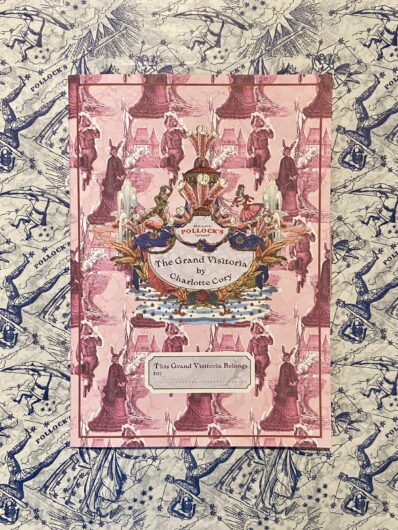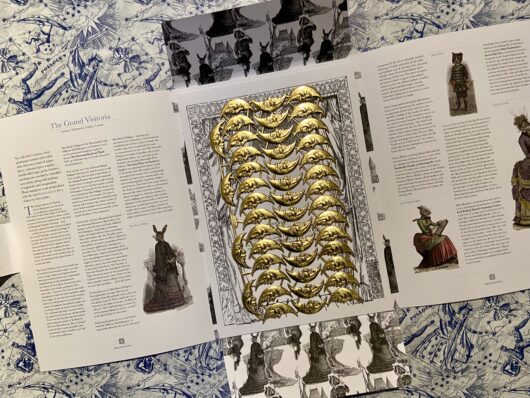From the Japanese Folk Toy to the Japanese Pokémon Card Posted on
The History of Objects
A glimpse of Japanese culture through the stories behind its toys (Part Two)
After the freshest cup of green tea I’m finally ready to embark on more adventures around Japan…
• Stop five: Gangukan (Japanese Folk Toys Museum)
One of my most anticipated stops during this trip was always Kurashiki’s Gangukan or Japanese Folk Toys Museum, which definitely did not disappoint. Though housed in only four rooms part of another traditional 1800s building, the collection was very extensive and well-curated.
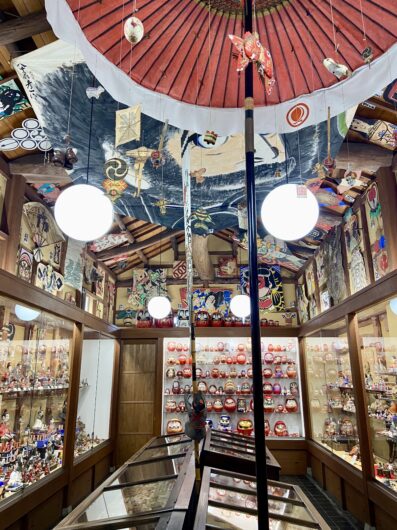
Gangukan (Japanese Folk Toys Museum)
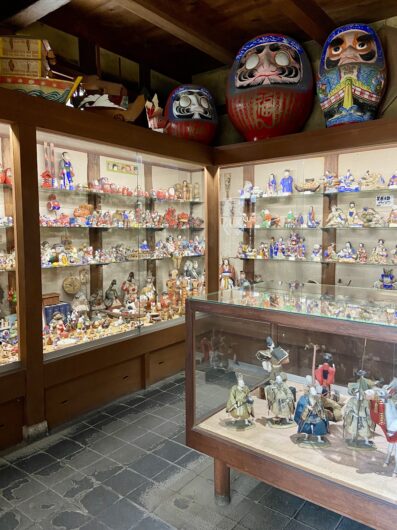
Gangukan (Japanaese Folk Toys Museum)
I loved to see such a different side of the Japanese toy tradition, the exhibits focusing on artefacts crafted with humble materials like wood, clay, textiles or papier-mâché. Moreover, these toys were often born as objects for adults originating in superstitions, prayers or exorcisms and not concerned with play/education, but with the protection of children instead.
Among my favourite items and stories behind them:
• The inu hariko are small papier-mâché dogs from the Edo period helping children to grow up healthy. At court, these dogs were used in purification rituals to eliminate bodily uncleanliness and prevent disasters. As dogs are thought to be animals that give birth easily, these items were also regarded as talismans helping with an easy, safe delivery of babies.
• The kokeshi is a wooden doll from North-East Japan. Its simple appearance actually requires a lot of artistry to achieve, with some of them having moveable, squeaky necks and elaborate patterns. As well as a child’s plaything, these toys were also lucky charms offered to childless wives.
• Another lucky charm is the sasano-ittobori. These are carved out of wood into the figures of Ebisu, Daikoku, Kasa-kamuri, etc, all deities thought to bring success in life. It was originally manufactured as the by-product of farmers during their off-season.
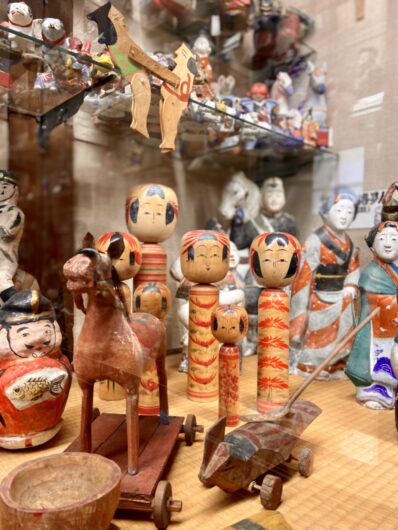
Kokeshi dolls
• Stop six: Piggy Bank Museum
Kurashiki’s Piggy Bank Museum turned out to be another bizarre and fascinating adventure. Located on top of a messy antique shop, it is comprised of a room filled to the brim with piggy banks of all types, including a Snoopy one my Mum had as a girl and now residing in my childhood bedroom. The collection then carries on into a couple of other rooms, this time bursting with Japanese vintage toys, once again from the post-war Shōwa period. As a lover of space-themed trinkets, I couldn’t help but be hypnotised by the robots from the 1950s!
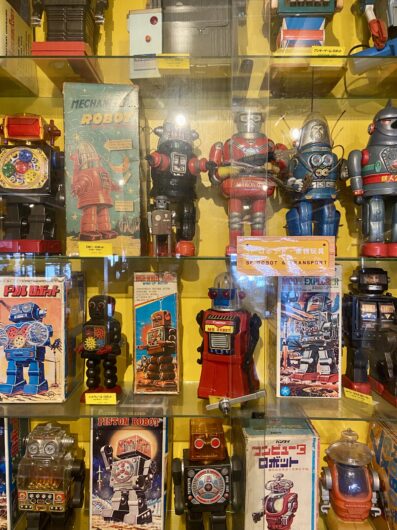
1950s robots from Kurashiki’s Piggy Bank Museum
The rest of Kurashiki was also dotted with various toy spots, mostly vintage shops obsessing over toy train paraphernalia. A place that really caught my eye, however, was a small workshop selling handmade teddy bears. Run by a couple of women (one of them busy sewing and stitching that very moment), the spot looked so sweet and cosy, even featuring a couple of Hinamatsuri-style teddies in the window!
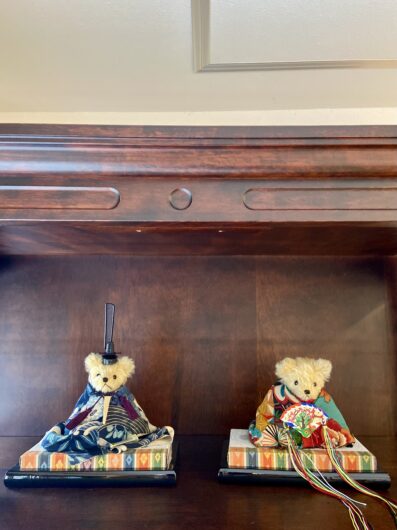
Hinamatsuri-style handmade teddy bears
• Stop seven: Ikebukuro, Akihabara and Harajuku
Before saying goodbye to Japan, I spent another couple of days in Tokyo, mostly dedicated to the few souvenirs left to purchase. I decided to use this as an excuse to explore the iconic neighbourhoods of Ikebukuro, Akihebara and Harajuku.
The first two embody the beating heart of otaku culture, meaning the phenomenon of fandoms passionately and creatively engaging with the media they like. Needless to say, the areas were ruled by three omnipresent gods: Hello Kitty, Dragon Ball and Pokémon. Innumerable other idols from innumerable other universes also populated the buzzing streets, making for a truly fun occasion to celebrate one’s inner child. In my case, I decided to set myself the objective of finding a card of my favourite Pokémon – Charizard, of course! I say ‘of course’ as my favourite Pokémon is definitely not a niche one and most shopkeepers selling all things anime seemed to have been asked about it a significant amount of times that very day. The first spot I visited only had a couple of extremely rare versions of the card retailing at over £200, while four or five more places proudly showcased ‘No Pokémon cards’ signs on their windows. It was only when I had lost all hope that I stumbled upon the sign for the last one of the dedicated shops I had noted down, one that somehow wouldn’t show up on any map. After realising said place was hidden away up three sets of stairs on the side of a building, I rushed there for one last try… and guess what? Seventh time’s a charm! Not only one, but three Charizard cards within my price range (£10), including one with a beautiful, iridescent illustration of the Pokémon fast asleep in a field. Best souvenir ever!
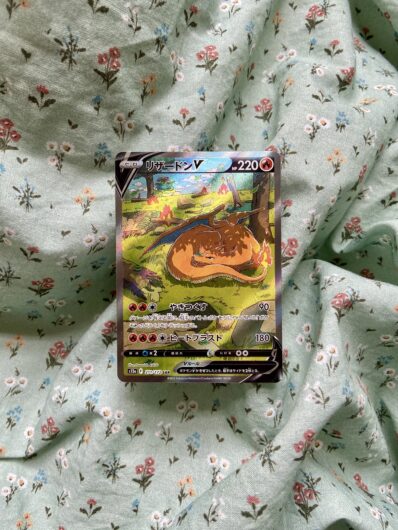
Japanese Charizard Pokémon card
Next up Harajuku, known as a fashion-oriented area populated by young people. Though very touristic in parts (think Camden Market), the neighbourhood still hides some interesting, smaller streets populated by boutiques and second-hand clothing shops. Some of the incredibly elaborate and stylish outfits I spotted couldn’t help but make me think of the Blythe doll phenomenon. These fashion dolls with big eyes originated in 1970s US, but in 2001 Japanese toy company Takara began producing new editions of them. A network of hobbyists customising the dolls and their outfits emerged, sharing photographs of their creations online. Among them, one of Pollock’s most magical friends – Eileen Lam, also known on Instagram as @dollytreasures. Combining her mesmerising collection of Blythe dolls, toys, and various accessories with her artistic and photographic talent, Eileen sheds light on a secret world in which these little creatures are the cause of all sorts of mischiefs. If you’re curious to find out more about them, you can in Dolly Treasures’ books The Little Mischiefs and The Little Mischiefs – Up To No Good, both available at Benjamin Pollock’s Toyshop!
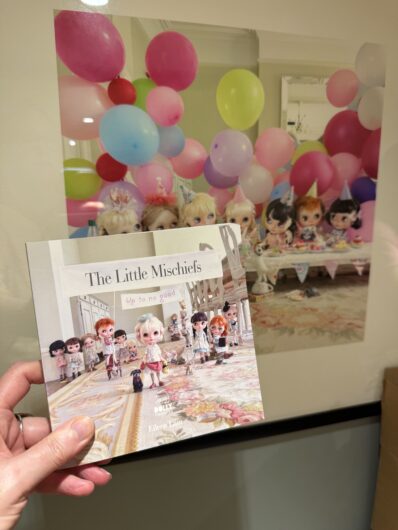
The Little Mischiefs by Dolly Treasures featuring Blythe Dolls
• Stop eight: the largest capsule toy store in the world!
My quest for souvenirs also ended up leading me to the largest capsule toy (Gachapon) store in the world, which would have been my 6-year-old self’s idea of heaven. Though slightly overwhelmed by the whole situation, I still had a lot of fun and could really observe how passionate Japanese people can be about their toys! Tons of dispensers are lined up in endless aisles and, for the cost of 100-500 Yen (the equivalent of about 50p to £2.50), offer an incredible variety of extremely detailed, miniature toys and keychains. I guess what is so attractive (and addictive) about them is the combination of surprise, collectability and “kawaii” (cute) aesthetic characteristic of these items as well as the relatively cheap price they’re sold for. Needless to say, I was hooked in no time!
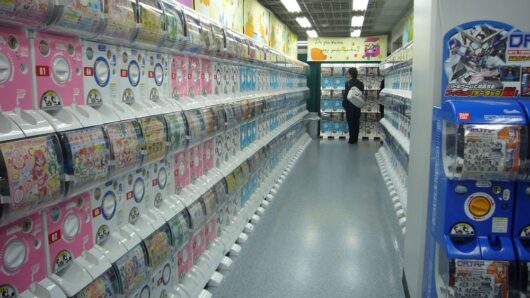
A gachapon store
After two weeks spent exploring Japan as well as being immersed in a significant amount of toy-related culture, I keep thinking about how the Japanese word for toy, ‘omocha’, originates from the term for hand-held talismans or objects kept for protection. While the term mostly refers to folk and traditional toys, I like to think about something like a Gachapon in a similar way: a charm holding a kind of special significance to the owner, even if it can simply make them smile on a rainy day.
I’m not the only one to have been inspired by all things Japanese lately. Artist, writer and Pollock’s regular collaborator Charlotte Cory just said goodbye to her atmospheric exhibition ‘Six Months of Dreaming’ at the Art Workers’ Guild.
Having come upon an intriguing letter and some sketches by a young Japanese fashion designer some years ago, Cory was inspired to make the artist’s dream come true.
1929: Yutaka Kajikawa finds out that English aristocratic journalist Lady Grace Hay Drummond-Hay is visiting Japan on the very first ‘Round the World Flight’ of a Zeppelin airship. The artist therefore decides to send her a letter begging for help in getting his ‘Jazz Age’ necktie designs in the West, as everyone in his home country finds them too modern for contemporary taste. Even if the woman were to do nothing for him, he would enjoy “six months of dreaming” that something will come of his letter. Lady Drummond-Hay did indeed do nothing for Kajikawa, but someone else came up with a couple of ideas… Cory reimagines the fashion designer’s life story in her latest novel ‘Six Months of Dreaming’ and opens an exhibition – or shop – of the same title imagining the central London boutique in a 1930s deluxe Art Deco department store that would have stocked his garments. The exhibition features Kajikawa’s neckties as well as collaborations with Cory in the shape of scarves, wallpapers and even teddy bears!
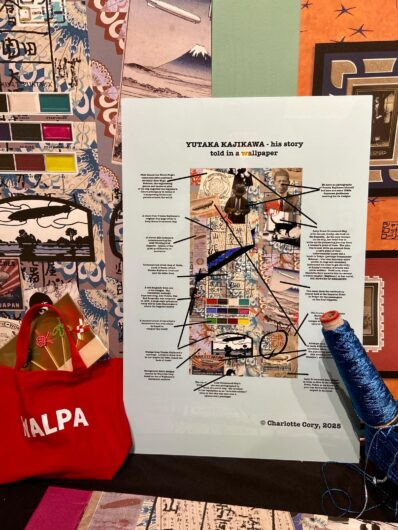
Charlotte Cory’s exhibition ‘Six Months of Dreaming’ at the Art Workers’ Guild in London
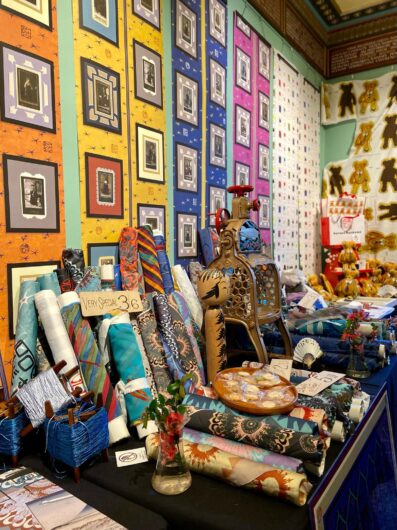
Charlotte Cory’s exhibition ‘Six Months of Dreaming’ at the Art Workers’ Guild in London
Some old friends of Pollock’s also visited the shop: all the animals inhabiting Cory’s multifaceted Victorian universe, this time dressed in traditional Japanese outfits to celebrate the occasion! If they sound curious to you, you can make their acquaintance through The Grand Visitoria Colouring Project – exclusively available at Benjamin Pollock’s Toyshop!
Chiara Scoglio June 2025

